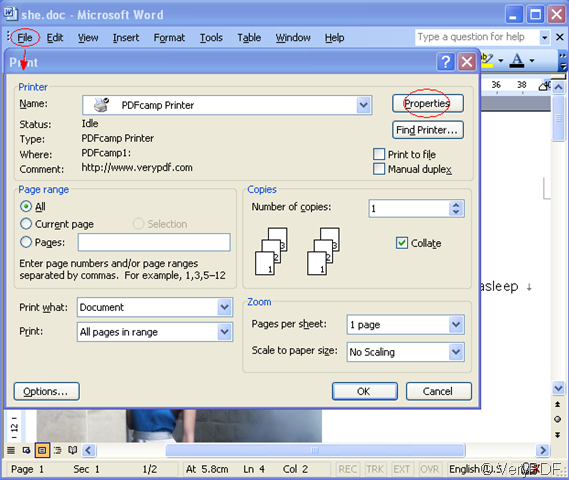How to Use the P
Post on: 30 Апрель, 2015 No Comment

The price-to-earnings ratio (P/E) is probably the most widely used — and thus misused — investing metric. It’s easy to calculate, which explains its popularity. The two most common ways to calculate it are:
- P/E = share price divided by earnings per share
- P/E = market capitalization divided by net income
The share price is the market capitalization divided by the number of shares, so the results should be identical. Share price and the market cap are easy to find in the quote section of any financial website. The earnings are usually taken from the trailing twelve months (TTM) and can be found by checking the income statement for the past four quarters. A P/E using TTM figures is often called the current P/E.
Another variation is the forward P/E, which is calculated using analyst future earnings estimates, rather than actual historical earnings. Most financial websites give both the current and forward P/E. I find forward P/E a useful guide for cyclical companies, companies coming out of negative earnings, and those that have significant one-time charges embedded in current earnings. You may also encounter the diluted P/E. which accounts for a company’s diluted shares.
You’ll often find slightly different P/E values for the same company on different financial sites. Why? Because some sites normalize earnings for one-time items, which distorts the P/E ratio. These small variations are immaterial.
In essence, the P/E tells us how much an investor is willing to pay for $1 of a company’s earnings. The long-term average P/E is around 15, so on average, investors are willing to pay $15 for every dollar of earnings. Another useful way to look at this: Turn the P/E ratio around to look at the E/P ratio, which when expressed as a percentage gives us the earnings yield. For instance: 1/15 gives us an earnings yield of 6.67%.
Before you get carried away .
The P in the P/E ratio is determined at any given point by the market value of the company or its shares. Built into this market price are the future expectations of the company’s growth. If DVD-rental-by-mail company Netflix ( Nasdaq: NFLX ) has a P/E of 63.8, and Motley Fool Inside Value pick Endurance Specialty ( NYSE: ENH ) has a P/E of 7.3, does this tell us whether Endurance is a better value than Netflix?
Probably — but not certainly. For starters, analyst expectations for Netflix’s earnings growth over the next five years range between 17% and 40%; estimates for Endurance are a modest 12% to 14% over the same time period. So clearly, future growth expectations significantly affect the P/E ratio.
Apples to apples
As you’d expect, different industries have different average P/E ratios. Endurance is in the insurance industry, which typically has low P/E ratios. Even industry giants AIG ( NYSE: AIG ) and Allstate ( NYSE: ALL ) generally sport P/Es in the 11 to 15 range. In terms of rate pricing, insurance is a cyclical industry. Companies that cut rates during a soft market are usually not adequately compensated for the risk taken. Those that do maintain pricing discipline often see their top-line growth stall or even reverse. Clearly, it’s important to understand the industry when comparing P/E ratios — industries with higher perceived risk attract lower P/E ratios.
Investment returns also affect the P/E ratio. If I can buy shares in a company with a return on equity (ROE) of 30%, then with all other things being equal, I should be willing to pay more per dollar earned than for a company with an ROE of 10%. Consider Tyco ( NYSE: TYC ) and Coca-Cola ( NYSE: KO ). Both currently have a P/E around 21, yet analysts expect Tyco to grow earnings at 14%, vs. 8% for Coca-Cola. Coke, however, has an ROE of 31%, vs. just 9% for Tyco. In other words, in the past year Coke returned 31 cents for every $1 of shareholder’s equity, while Tyco returned just 9 cents. Be careful in using ROE for companies with a high debt load, because it will be inflated. In that situation, using return on invested capital (ROIC) would make for a more accurate comparison.
Counting earnings

Earnings are an accounting figure that includes non-cash estimates. Since earnings are covered by U.S. generally accepted accounting principles (GAAP), you might expect all reported earnings to conform to the same template. This is certainly not the case — companies have plenty of latitude under GAAP to manipulate earnings, employing either an aggressive or conservative approach. Some companies, such as General Motors ( NYSE: GM ). have massive underfunded pension and health-care obligations that aren’t reflected in their income statements. Still others, like eBay. issue excessive amounts of employee stock options, which are also not expensed on the income statement (yet). Both of these items reduce the E in earnings and therefore increase the real P/E ratio.
Companies sometimes have true one-time events that can affect net earnings either positively or negatively. If a company sells a division for substantially more than its book value, the difference will be recorded as a positive in net earnings. This will distort the P/E and render it useless as a measure of value. In this case, we’d adjust the net earnings to arrive at a more useful P/E. A wide gap between current and forward P/E is a good sign that there may be a one-time event included in net earnings.
Follow the cash
Many Fools (myself included) prefer to use free cash flow (FCF) for valuation. FCF can also be manipulated, but it’s more difficult to fake cash. Over the long term, a well-run company’s FCF should be approximate to earnings.
Just because a company has a low P/E does not mean it’s a good value. Companies have a low P/E for a reason, and the trick is finding out whether that reason is likely to be short-term or permanent. Conversely, not all companies with a high P/E are overvalued. It may be counterintuitive, but a cyclical company will usually have a high P/E at the bottom of the cycle, where earnings fall much faster than the share price because the market accounts for the cyclical nature of the company.
Fun with P/Es
My favorite use of the P/E ratio is to compare the current P/E of a company with its historical averages. (To do so, I generally use a subscription service, ValueLine, which gives me the past 15 years’ average annual P/E ratios. You can also use the free MSN Money Central 10-year ratio.) I then average the annual P/E figures (taking out excessively high or low outliers) and compare this figure with the current P/E ratio. If the current P/E ratio is significantly less than the average, it could indicate that by historical standards the stock is undervalued. You can do the same thing with price-to-book (P/B) and price-to-sales (P/S) ratios.
There are drawbacks in any historical comparison of P/E ratios. During market bubbles, P/Es can be overinflated for extended periods of time. Caution should be used, particularly with average P/E values from the late 1990s. P/E ratios are also generally higher in a low-interest-rate environment because a company’s cost of capital is lower, and also because investors are more likely to take on the risk of owning equities when bond yields and fixed income rates are low.
The price-to-earnings ratio is a useful measure, but it must be used with many other metrics to accurately assess a company’s worth.
Philip Durell is the lead analyst of Motley Fool Inside Value. Every month, Philip recommends two of the market’s best values. To date, his picks are up 10.30%, vs. just 4.22% for the S&P 500. If you’re interested in joining the Inside Value community, Philip is offering a free 30-day trial to the service. Click here to learn more.
Philip Durell does not own shares of any company mentioned in this article. Endurance Specialty and Coca-Cola are two picks from Philip’s Inside Value portfolio. eBay and Netflix are Motley Fool Stock Advisor recommendations. The Motley Fool has a disclosure policy .














